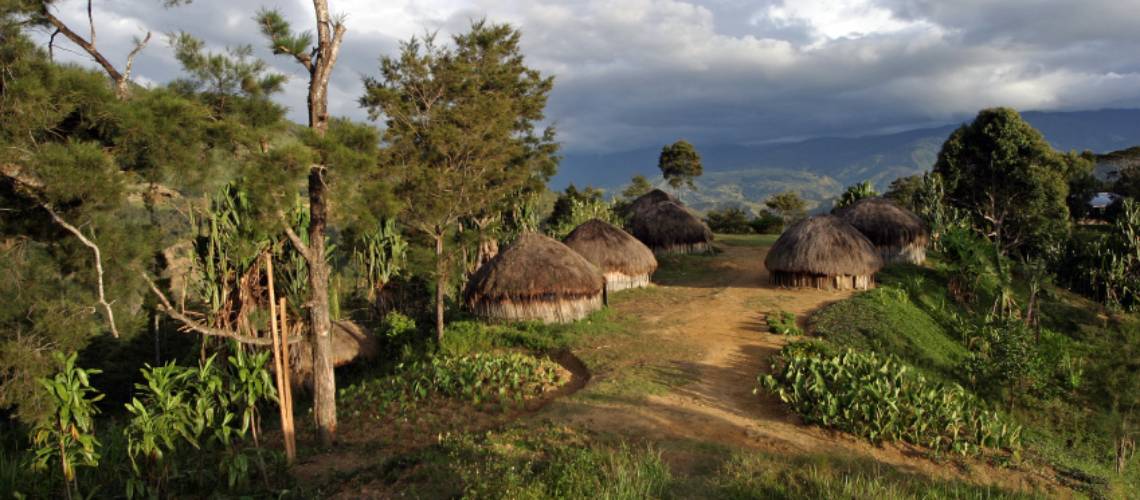 Huts in the Solomon Islands
Huts in the Solomon Islands
One enduring paradox of climate change is that those who have done the least to induce the climate emergency are among the most affected by it. Nowhere is this more evident than in the Pacific Islands. Despite having some of the world’s smallest carbon footprints, communities here face an existential threat as climate impacts fundamentally threaten their way of life. Within Pacific communities, this vulnerability is also not evenly distributed, with the poorest and most vulnerable, including women, often bearing the most significant burden.
However, recent research by our team in Solomon Islands has shown that this challenge may extend to the very support Pacific communities receive for climate adaptation. Our new work suggests that while we know communities urgently need assistance - current approaches may not be adequately addressing vulnerability for those most at-risk.
As the effects of climate change overwhelm communities’ capacity to cope, they are increasingly reliant on outside assistance to adapt to their changing environment. Governments and development partners are conscious of this and are accelerating their investments in community adaptation. Yet outside assistance is not doing as well as it should in addressing the immediate concerns and priorities of at-risk communities. Our work suggests a greater regard for local institutions and local leadership is required, beyond simple investment in physical infrastructure.
We can, and must, do better. Listening to the experiences and perspectives of members of three communities in Solomon Islands, the new research identifies three practical insights for policy and program design.
1. Climate adaptation support needs to combine physical infrastructure investment with a focus on strengthening communities’ social resilience. Social resilience is the ability to withstand the effects of climate shocks and continue to thrive in their aftermath. And it is enhanced when communities are cohesive and have the capacity and the agency to decide how best to adapt to changing conditions. To build social resilience, the method and timelines of external adaptation should complement existing local institutions, practices, and needs.
Critically, projects and partners should better focus on the collection of data directly from communities. This is vital in determining what works, what may not work, and how communities can be best supported to meet their aspirations. At present, Solomon Islands undertakes Integrated Vulnerability Assessment (IVA) in communities which are well-designed and address environmental and social vulnerabilities. However, they remain limited in their size.
2. Climate adaptation planning needs to acknowledge the complex nature of vulnerabilities and include measures to address them. Other sources of vulnerability, such as poverty, hardship, livelihoods, education, health, and gender relations, can shape people’s ability to adapt. These underlying factors can undermine the ability of households to bounce back following a climate shock. They can also affect social cohesion and exacerbate existing social inequalities. Climate adaptation programs must therefore go beyond focusing on environmental risks and responses to consider the deeper structural and contextual factors that shape community capabilities.
Front-line services (such as education, health, water, and banking) and social protection are essential to strengthening social resilience as they develop human capital, increase economic capabilities, and enhance social inclusion. For instance, people across the communities we surveyed saw education as fundamental to adaptation; this was both to bolster present living standards and future livelihood prospects, given that moving away due to the impact of climate change was a genuine possibility.
3. To tackle the broader systemic and structural challenges of climate adaptation, a government-led, multisectoral approach is required. Strengthening the social resilience of communities means supporting local communities and linking local and state systems in a ‘whole of government’ approach to climate adaptation. Better coordination would mean different levels of government can harness each other’s relative strengths. Silos can be overcome; for instance, with service delivery and social protection mainstreamed into disaster management, and social resilience brought into program design across sectors.
Considerable institutional gaps and capacity constraints between levels of government also need to be addressed. At present, most villages in Solomon Islands have functioning disaster response committees, yet the national government remains a distant entity, and provincial governments need capacity building support. Strengthening intergovernmental links and adequately resourcing local institutions is, therefore, crucial. Development partners have an important role to play here; through making sure their support closely aligns with the government’s priorities while helping the government enhance its technical capacity. Any genuine ‘whole of government’ climate initiative should report publicly on progress, with genuine transparency on resourcing, deliberations, findings, and research.
Collectively, these three strategies could help strengthen Pacific communities’ social resilience to cope with the climate crisis while also addressing their vulnerabilities. We owe it to the most vulnerable and marginalized communities across the Pacific to adopt these approaches as best we can.




Join the Conversation